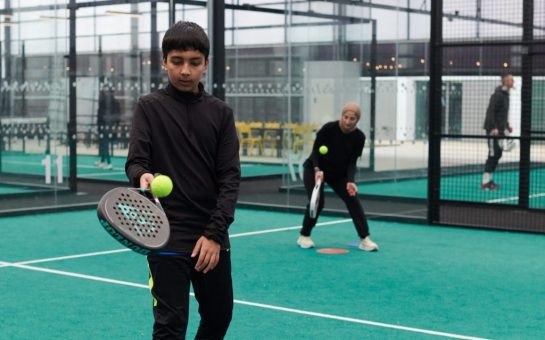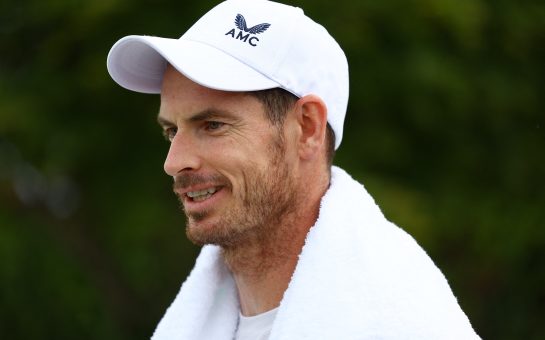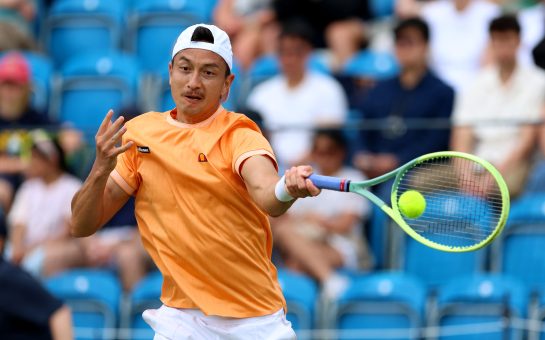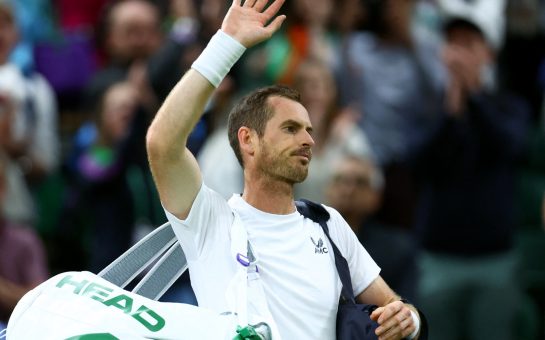By Matt Verri
May 7 2020, 11:00
Follow @SW_Londoner
At the start of the last decade, British tennis appeared to be in fine fettle.
Andy Murray was reaching Grand Slam finals, and there was even more optimism to be had at junior level where performances were impressive.
George Morgan won the U18 Orange Bowl, one of tennis’ major junior international competitions, in 2010, and a year later Oliver Golding brought home the US Open Boys’ Singles title – he was joined in the semi-finals by fellow Brits Morgan and Kyle Edmund.
Meanwhile, Liam Broady made two junior Slam finals and was ranked number two in the world.
Yet a decade later, those responsible for that optimism have largely followed a similar path to the bright prospects that came before them.
Edmund has enjoyed the most successful career of that crop of junior talent, breaking into the top 20 in the world in 2018, though his semi-final appearance in the Australian Open that year was one of only two times he has made it past the third round of a Grand Slam.
Morgan and Golding, like several others of the same age, retired early after struggling to replicate their junior success at senior level.
Early retirement is an issue Josh Goodall understands. He was part of his own generation of promising young British talent and made the transition to the pro circuit better than many, but retired at the age of 27 in 2013 due to financial difficulties.
“I had to ask whether I wanted to keep funding myself or whether I wanted to put down a deposit for a flat,” Goodall said.
“You can keep playing, and I feel I could have maintained a ranking between 180 and 300, but at that level you’re breaking even at the end of the year. There’s no way you can live off that.
“I was funded by the LTA from the age of 18 to 23, which I was very grateful for. At 23, I was told unless I reached my ranking target of 175 I wouldn’t be funded the following year.
“That year I reached my career high ranking of 184, but the LTA called me into an office and told me my sponsorship was cut, I was on my own. That was hard to handle at 23 – it didn’t go down too well.”
For those so successful in the junior game ten years ago, retirement came even earlier. Both Morgan and Golding retired at the age of 21, though the latter briefly returned to the sport in 2017. Morgan never played in a Grand Slam, while Golding lost his only first round appearance in a major at Wimbledon in 2012.
Morgan, Golding, Broady and Edmund all reached the top ten in the world as juniors, but only Edmund has reached the top 150 as a professional.
This is not a new problem for British tennis – for decades successful junior talent has failed to materialise into much as senior players. Goodall believes the transition to playing established professionals is too much for some.
“When juniors have to make that transition from being top dog to being a nobody on the senior tour, a lot of them can’t handle it,” he said.
“My first year on the futures circuit, I’d come up against players like a 37-year-old Spanish guy who just doesn’t miss and is ranked 250 in the world.
“They do not care one bit that you were a top teenager in the world, they’d almost laugh at you.
“At the time, there was a real batch of British juniors around my age – David Brewer, Alex Bogdanovic, Guy Thomas were just a few.
“Brewer is a good example – he reached number four in the world in the ITF junior rankings, but he couldn’t get the transition in the senior game.
“He was used to walking around junior tournaments like God, everyone thinking he was amazing with all the sponsorships, but at senior level people don’t care who you are.”
The nature of tennis and seedings means that lower-ranked players face a mammoth task to succeed at the biggest events.
“There’s a fine line between the various rankings, but there is still that difference and the expectations don’t necessarily match that,” Goodall said.
“When I was GB number two behind Andy, there was still a big gulf between us, but going into Wimbledon I was still expected to go deep in the tournament.
“I don’t think the general public quite understand that gap.
“With tennis now, someone ranked 200 in the world is never going to win a major – tennis is stuck with the top six completely dominating the sport.
“Other sports, like golf, aren’t necessarily like that. If I had the equivalent career in golf, I’d probably be a multi millionaire and still playing!”
Goodall’s parents remortgaged their house five times to fund his junior career, and though he wasn’t funded by the LTA until he was 18 he still reached 28th in the world as a junior.
He went on to represent Great Britain in the Davis Cup, playing as the side’s lead player against Belgium in 2012.
Josh Goodall vs Steve Darcis first up. Enter the cauldron. #DavisCup pic.twitter.com/4e9acXde
— Stuart Fraser (@stu_fraser) April 6, 2012
Now director of tennis at Downe House School, he believes the priorities of player development were largely misplaced when he was a junior.
“I remember it being so obsessed with getting your LTA rating up – it was a complete obsession with ranking points,” Goodall said.
“Everyone was working towards that, it was never about how the style of your game was.
“Funding was done the wrong way. You would have the LTA talent spotters, and they didn’t go round much at all – it was just results based.
“They wouldn’t look at a player and think, ‘when they develop and get to 18, their game is going to click and they’ll be a very good tennis player.’
“It was all about who they were beating when they were 14 or 15, and then just choosing players that would win tournaments at that age, but players burn out and don’t develop or grow as much as expected. It’s just not the best way to develop players.”




